Constructing an IoT Innovation Studio combining teaching and learning
Abstract Through the combination of Internet of Things technology and life and classroom, this paper describes and constructs a new IoT innovation studio-bit lab [1]. The article aims at the increasingly fierce global technology competition in the 21st century and the challenges it faces. From the latest IoT technology and its value and significance to life and social development, combined with the current situation of Chinese education, it proposes the construction of the Innovation Studio of the Science and Technology Museum. A new interdisciplinary, interdisciplinary, multi-disciplinary, multi-disciplinary, individualized development, combination of teaching and learning science education model not only incorporates the latest Internet of Things science and technology, but also provides unique insights into the cultivation of innovative talents. Through the construction of the example of the bit laboratory and its teaching practice activities, the article reveals the important significance and positive role of the IoT Innovation Studio in promoting the integration of teaching and learning in the Science and Technology Museum.
Key words Internet of Things technology innovation education exhibition teaching combined with bit lab
The 21st century is an information age in which science and technology are changing with each passing day and material wealth is growing. The times have given us unprecedented conveniences and challenges. We live in an unprecedentedly open society where people learn about the wonderful underwater world through satellite TV, use mobile phones to communicate with friends thousands of miles away, spend leisure time in online shopping and online games. In the future, the development of the Internet of Things [2] project can make people predict that things can be exchanged without people, thus changing our way of life. The Internet era has driven more development of the tertiary industry, and the rise of the Internet of Things will link the first and second industries. “Just like the steam engine to the industrial revolution, the Internet of Things will open a new era of information.†Experts predict that Internet of Things technology will become an important technology to change human life in the future.
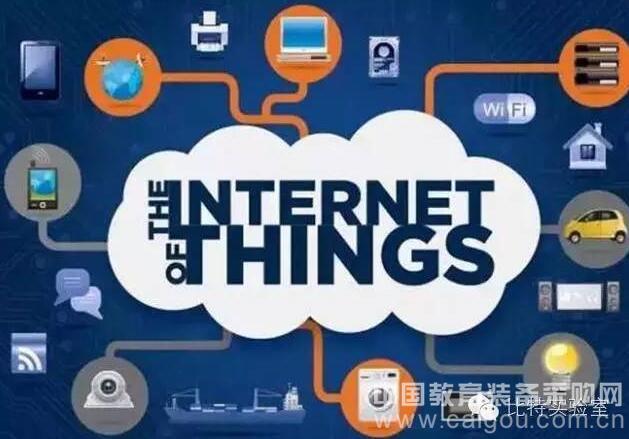
The concept of the Internet of Things was introduced in 1999. The Internet of Things is the Internet of Things "Internet of Things". Its English name is InternetofThings. This has two meanings: First, the core and foundation of the Internet of Things is still the Internet, which is an extended and extended network based on the Internet. Second, its client extends and extends between any item and item to conduct information. Exchange and communication. Internet of Things is widely used in intelligent transportation, environmental protection, government work, public safety, safe home, intelligent fire protection, industrial monitoring, environmental monitoring, elderly care, personal health, flower cultivation, water monitoring, food traceability, enemy investigation and intelligence gathering. And so on. For example, in order to achieve energy saving, environmental protection and comfortable living, the temperature of the room can be remotely monitored by a mobile phone, and the switch of the air conditioner can be controlled. If you travel on a hot summer day and find that the mobile phone reports that the indoor temperature is lower than 26 degrees, you know that you have forgotten to turn off the air conditioner when you go out. At this time, you can easily turn off the air conditioner through the mobile phone, which saves energy. In addition, you can go home before you go home. Turn on the air conditioner so that you can enjoy the comfortable temperature and improve the quality of life when you go home. Application and innovation are the soul of the Internet of Things.
The Science and Technology Museum is not only a reflection of the national science and technology modernization, but also a concentrated expression of the youth exhibition education activities. China's science and technology museum is in the critical period of a major turning point. The science and technology museum industry must achieve “three breakthroughs†in its new development stage: changing the traditional display design ideas; changing the “exhibition without teaching†situation; changing the simple exhibition The situation of popular science education [3].
How can we effectively apply the latest IoT technology to science and technology venues? How can we change the current situation of separation of teaching and learning? How to build a bridge between science and technology museums and schools? In an increasingly globalized Today, especially for the fast-growing China, faced with the challenges of work and professional confusion, we have faced a huge crisis in the test-oriented education and the Putian-style classroom teaching model that we have followed for hundreds of years. Innovative education capable of individualized and differentiated students The future classroom has become an urgent need for China's development: aiming at all students and comprehensively improving students' innovative ability; focusing on developing students' potential development and cultivating students' independent learning ability and Self-development ability. Our students need multi-dimensional capabilities to solve the complex problems encountered in their future work.
In response to the above problems, an effective solution is to build an IOT innovation studio in the science and technology venues, which can not only provide class-based lectures for students from surrounding schools, but also design creative students. As a result, the work is directly used in the IoT science exhibition, so that a classroom plays the role of education and exhibition. As the students' DIY creative works in the classroom are continuously updated through classes, they can provide creativity and materials for the development of exhibits in science and technology venues, enrich the content and form of science and technology venues, and strengthen the connection between schools and science and technology museums. The earth improves the usage rate of the Science and Technology Museum.
This paper proposes a new science education model that integrates interdisciplinary, liberal arts and culture, multi-disciplinary, individualized development, and combination of teaching and learning through the construction of the example of the Internet of Education Innovation Education Bit Lab and its teaching practice activities. A unique insight [4].
First, the teaching environment and concept of Bit Lab
(1) Teaching environment
Each child is a natural inventor. In order to reflect the combination of technology and art, Bit Lab has created a transparent and colorful innovative thinking space, combining the application of IoT sensor electronic chip and 3D creative art design. Together (see Figure 1). In order to inspire students' innovative spirit, all the designs in the Bit Lab consist of small blocks ("Bit"). The chairs and tables are made up of transparent, acrylic panels and rectangular frames that students can assemble and repair themselves. The transparent tabletop allows students to see textbooks on the desktop or on the tablet without affecting hands-on lab activities. Course design guidance and project requirements within the computer, or important information displayed on the Internet search, virtually doubled the area of ​​experimental activity (see Figure 2).
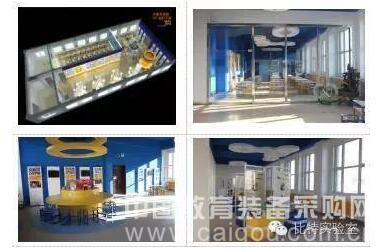
Figure 1: Rendering and real-life map of the Inner Mongolia Youth Science and Technology Center Bit Lab (experimental area, challenge area, cognitive area and exploration area)
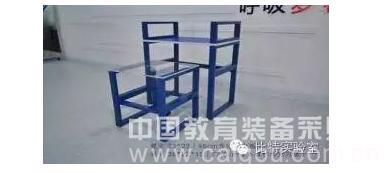
Figure 2: Combined desk and chair in Bit Lab
Bit Lab's electronic sensor chip building block module includes four areas commonly used in life: energy saving and environmental protection (such as voice control lights and temperature alarms), home security (such as mobile phone monitoring of people in the home), sports health (such as ultrasonic height measurement and Sports pedometers, etc.) and entertainment games (tablet-controlled cars, geomagnetic induction radios, etc.). For example, voice control, light control, infrared, ultrasonic wave, temperature and humidity, acceleration and gas sensors (see Figure 3), students can connect these sensors and related controller modules through plug-in wires according to the needs of their own product design. Quickly constitute a complete and practical sensing electronic system. For example, design a home fireworks and burglar alarm system or human body sensing light control system remotely controlled by mobile phone. This will not only stimulate students' interest in designing electronic systems, but also enhance students' hands-on and creative design capabilities.
In order to enable students to quickly realize the design of the product, Bit Lab has designed a basic module with 3 different shapes and shapes, including square, rectangular, triangular, fan, right angle, obtuse and flat connection modules, small wafers, Nine different colors such as small squares (see Figure 4).

Figure 3: Bit Lab Partial Sensor Module
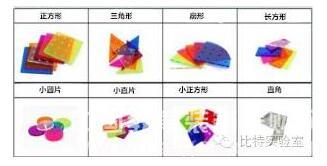
Figure 4: Bit Lab 3D Modeling Module
Students can use these basic modeling modules to quickly and easily create a variety of realistic shapes, and at the same time conveniently fix the sensing electronic modules to these modeling modules, just like designing a beautiful outerwear for the electronic system. Just as fun and exciting. Some students have designed Chinese works, dinosaurs, home lodges, penguins and other imaginative and creative works (see Figure 5).

Works: China Pavilion

Works: Perception of Dinosaurs
Figure 5: Creative work built by Bit Lab 3D modeling module
The Bit Lab's architecture consists of four zones that can be selected and selected based on the student's specific circumstances and teaching requirements. These four zones are:
1. Cognitive area: including the scientists' invention stories, chips, sensors and software, and some basic knowledge of creativity and animation design.
2. Experimental area: On the basis of cognition, the overall design of an IoT sensing electronic system is completed, which is practical and artistic.
3. Exploratory area: Analyze and detect the performance and scientific of the realized products, summarize and summarize them, and understand the working principle and implementation methods.
4. Challenge Area: Based on experiment and exploration, develop your own new thinking, make your own creative works, and participate in the competition.
An important feature of Bit Lab's four regional layout plans is that the Bit Lab can be used for experimental classes from elementary school to university to meet the needs of students of all ages from small to large. Bit Lab's experiments include simple cognitive and hands-on experiments for elementary school students, sensory electronics for college students' creative design, and the functions and design applications of research chips.
In 2012, Bit Lab established a science studio based on the Internet of Things Education Bit Lab at the Qinghai Science and Technology Museum and the Jiangxi Science and Technology Museum. In addition, more than 300 square meters of laboratories including the complete four districts (experimental area, cognitive area, exploration area and challenge area) have been successfully completed in the Inner Mongolia Youth Science and Technology Center. Through the experience class of the early students, the students and students have been obtained. A good rating (see Figure 6).
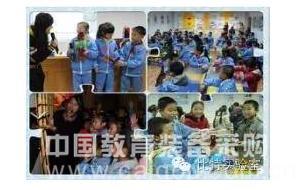
Jiangxi Science and Technology Museum Bit Lab
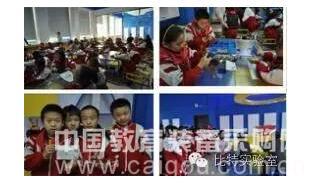
Inner Mongolia Youth Science and Technology Center Bit Lab
Figure 6: Bit Lab Activity Photo
(two) teaching philosophy
The construction of Bit Lab consists of two levels of technology and quality: on the level of science and technology education, it is the world's most advanced IoT technology based on sensors and intelligent control, and it can best reflect from technology to practicality. Conversion, such as the "labor-lit lights", "talking thermometers" and "long-eyed electric fans" that can be used everywhere in life, and other bit labs provide the actual realization of the Internet of Things. The application of "mobile phone control smart agriculture" and "smart home" experimental systems, such as "mobile phone control smart agriculture" system allows ordinary farmers to detect the temperature, humidity, illuminance and carbon dioxide concentration of vegetable greenhouses by mobile phone, thus achieving automatic fertilization And watering can not only reduce labor costs, but also save valuable water resources and increase crop yield and quality. Such a complete "smart agriculture" IoT system allows students to use the DIY module to build their own hands during the time of a bit lab, thus fully stimulating students' sense of innovation and enthusiasm for scientific exploration.
In addition, the bit laboratory promotes the lack of quality education in China's exam-oriented education at the level of quality education, highlighting the students' innovative consciousness and the pursuit of scientific knowledge, and stimulating students' interest and enthusiasm for independent learning. Thereby improving the overall quality of students becoming innovative talents. Advocating everyone is different, the evaluation of scores is not compared with others, but compared with the past, is the real driving force to inspire themselves. The curriculum begins with a touching story of a scientist or a philosophical story of life, from the story of the student's concentration to the bold hands-on experiment. Let the students improve their hands-on ability and innovation ability in the interactive process of the experiment, learn how to face failure and frustration, how to help the failed classmates, how to discover their own abilities and improve their self-confidence in learning; in the collaboration of the team Exercise leadership and teamwork skills. Through the students' happy experience and innovative thinking training, not only improve the students' hands-on and imagination, but also improve their language expression and artistic aesthetic ability through the expression and speech of the works.
Second, the teaching mode and practice of the bit laboratory
(1) Teaching mode
Bit Labs combines the advanced IoT technology with the latest developments in international engineering education reform CDIO [5] (Conceive concept, Design design, Implement implementation, Operate operation) engineering education model, combined with the characteristics of young people, developed The IoT Sensing Electronic Interactive Experience Training Course System is suitable for children of different ages.
The teaching process of Bit Lab consists of four parts: (1) understanding the history of inventors and human technology development (2) being a rigorous engineer (3) being a creative artist (4) making a passionate speech Family. The activity was carried out in accordance with Confucius's project cooperation model of “threesomes must have my teacherâ€. Each team consisted of three to four students, male and female. In each creative project, team members work together to resolve conflicting ideas to achieve a consensus design. Different talents, different ideas, different talents, the entire team members in the innovation, constantly blending and re-integration, become an excellent team of solidarity and cooperation (see Figure 7).
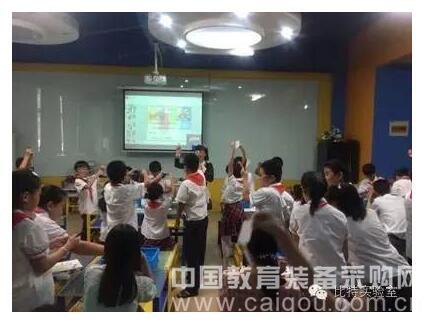
Figure 7 (a): The teacher is telling the story of the inventor
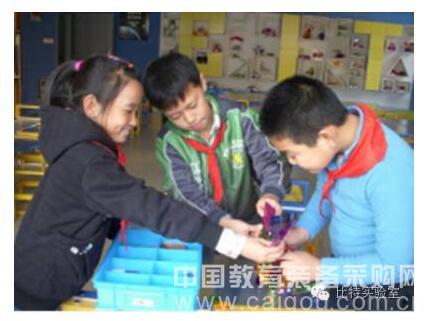
Figure 7(b): Students work together to build a model
1. Understand the story of the inventor: Inspire students' curiosity, curiosity, and enterprising spirit, such as the touching story of Edison's thousands of successful inventions of electric lights (see Figure 8).

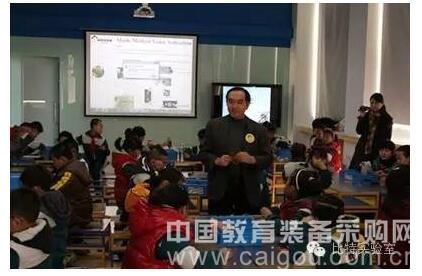
Figure 8: Teacher of the Inner Mongolia Youth Science and Technology Center Bit Lab
2. Be a rigorous engineer: Train students' ability to do hands-on, observe, think, and solve problems. Students should learn how to effectively use various sensor modules to solve real-life problems (see Figure 9).
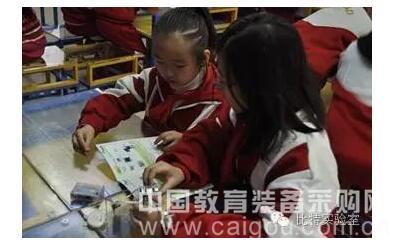
Figure 9: Inner Mongolia Youth Science and Technology Center Bit Lab Student Hands-on Connection Circuit
3. Be a creative artist: Train your students' imagination, creativity and teamwork and communication skills to inspire artistic inspiration and the spirit of innovation. Students use the colorful 3D modeling module to build a space-time shuttle and a solar-friendly car (see Figure 10).
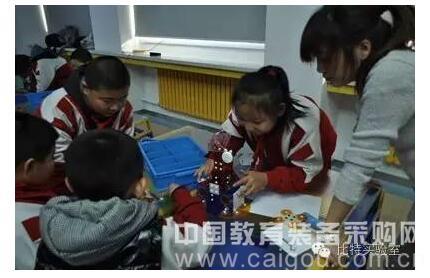
Figure 10: Inner Mongolia Youth Science and Technology Center Bit Lab students hands-on art creation
4. Be a passionate speaker: Train students' language expression and aesthetic speech skills to become optimistic and challenging talents. The students gave a speech on the work done by their own team. Some students described it: "I will never forget the shame of the first speech on the stage, the second gradual change, and the third time (see Figure 11).
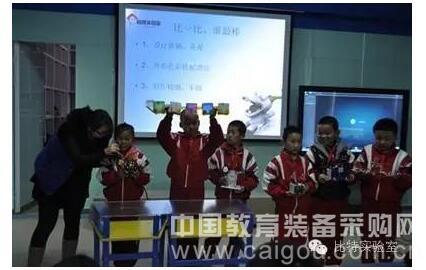
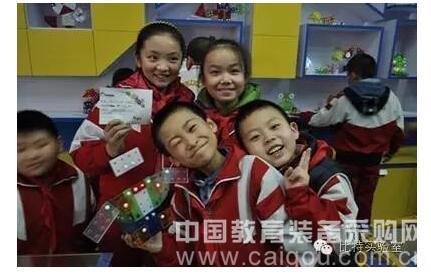
Figure 11: The Inner Mongolia Youth Science and Technology Center Bit Lab students give a wonderful speech
(2) Teaching practice and evaluation
Bit Lab's science education and hands-on activities are designed to compensate for the serious deficiencies and shortcomings of the key EQ and IQ abilities of children's personality development, creative thinking, essay speech, hands-on ability and teamwork ability in the current exam-oriented education. Gain more creative ability than knowledge and the ability to actively seek knowledge, stimulate children's potential and interest in learning, let children find a path to success for their own development, and be a winner in the fierce competition of talents in the future.
Since the launch of the BitLab IoT Innovation Course, it has been unanimously recognized by students, teachers and parents; the vast majority of students have significantly improved their thinking ability and ability to overcome difficulties and hands-on ability through the bit experiment class. Great progress has been made in the development of self-confidence, teamwork and essay presentations. For example, Deng Yuliang, a junior student at the affiliated middle school of Jiangnan University, was inspired by the class at Bit Lab. He went home and invented a folding bed with sensor lights and designed the design himself. He also led a team of three people, successfully built a radiant "China Pavilion" model with hundreds of components, and now it is displayed at the entrance of the Bit Lab. His biggest impression in the Bit Lab is that he has improved his self-confidence and has a bright spot for himself. Learning is easier.
Since the establishment of the Bit Lab in June 2012, Wuxi Nanhu Primary School has been very popular with both boys and girls. For boys, both hands-on and innovative abilities are generally improved; for girls, innovation, leadership, and hands-on skills are also generally improved. In order to stimulate each student's learning initiative and self-confidence, the laboratory's teaching scoring method also breaks the traditional teacher scoring system, but each student scores himself in comparison with his past. This not only gives students the opportunity to discover themselves and find themselves, but also allows students to learn how to evaluate themselves and how to evaluate others. Through a sample survey of 228 students in Wuxi Nanhu Primary School, 116 male students and 112 female students have significantly improved their ten abilities after 15 semester labs. At the beginning of the course, each student will receive a score sheet based on the ten competencies in the table (hands-on ability, innovation ability, ability to withstand frustration, observation, self-confidence, leadership, cooperation, knowledge, language) Expressing ability and aesthetic art ability) Rate yourself and score each skill from the worst 1 to the best 10 points. Figure 12 shows the percentage of students' ability progress after a semester bit course. Figure 13 shows the percentage of students who have increased after a semester bit course. For example, a student's score at the beginning of the semester is 2 points for the hands-on ability, and the ability to re-evaluate at the end of the period is 4 points. Then the student's progress in the semester is (4-2)/10=20%. It can be seen from the table that the boys' hands-on ability, innovation ability and aesthetic ability, as well as the girls' observation ability, leadership energy and expression ability have been significantly improved.
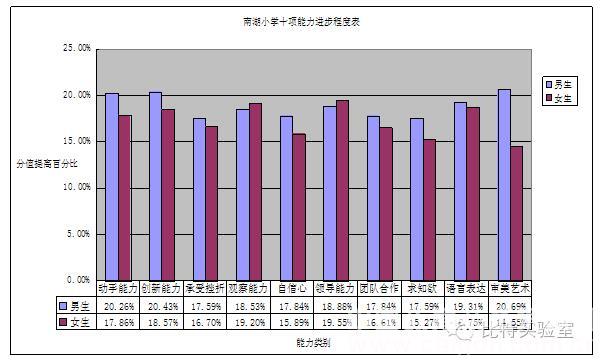
Figure 12: Wuxi Nanhu Primary School score percentage increase
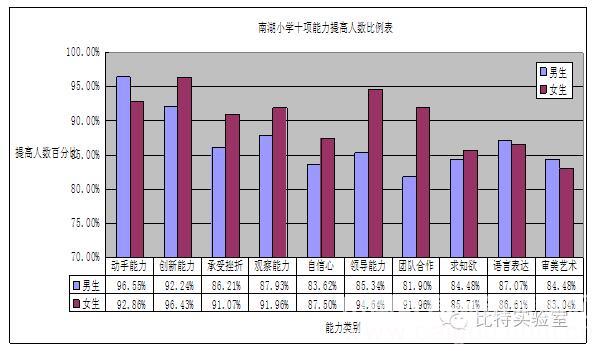
Figure 13: Percentage increase in Wuxi Nanhu Primary School
Third, summary
Using advanced Internet of Things technology, Bit Lab enhances students' self-consciousness and enthusiasm by training students' innovative thinking and hands-on ability, and comprehensively improves the quality of students becoming innovative talents. The digital experiment, the building block teaching, the gamification process, the personalized work and the integrated display are the charm of the “bit labâ€.
(1) Digital experiment:
It is to put the rigid theoretical description and textbook teaching into the digital processing of the computer, and use the hands-on experiment to show it, so that things that are usually invisible and invisible become familiar and easy to understand, such as "seeing" to "the emperor's new clothes", " Look at the sounds of your own voice, "seeing" the airborne signals, etc.
(2) Teaching of building blocks:
The main structure of the Bit Lab is building blocks. Including wooden tables and chairs, modular electronic modules, and modular shapes. Due to the flexibility of the building blocks, the traditionally solidified classroom model is replaced by a multi-disciplinary model that can be changed, combined, dispersed and concentrated, making the classroom of the Bit Lab novel and novel.
(3) Personalized homework:
No best, only better. Bit Lab's work does not set uniform standards and answers, giving students a space for free imagination, cultivating students' innovative thinking ability and hands-on ability. Bit Lab's scoring standard is also completely personalized, "only compare with their own past." The goal is to empower students to gain self-confidence, gain courage and self-discipline, and provide students with a space to move beyond their limits.
(4) The process of gamification:
Build creative works, cultivate thinking, train creativity, develop concentration, stimulate imagination, cooperate with stories, pictures, famous words, cases, and relaxed classroom atmosphere, and form a cooperative way to make the bit classroom full of games. Pleasure and happiness. If a class allows students to walk in with a smile and a smile, then the class will be successful. At Bit Lab, we can see the student's smile and see the student's experience of success.
(5) Integrated display:
The work of Bit Labs comprehensively demonstrates students' abilities in all aspects: hands-on ability, thinking ability, literary creation and imagination, observation ability, teamwork and leadership, language expression and aesthetic art ability, etc. A comprehensive performance of quality and ability.
The Internet of Things Innovation Education Bit Lab has established demonstration bases in primary and secondary schools and science and technology museums in more than ten provinces and cities nationwide. At the same time, the emergence of the bit lab's educational model is also in two primary schools and two middle schools in the Apple Valley headquarters in the United States. The two classes of off-campus activities have successfully opened an experience class, which has been well received by teachers and students. Through the Bit Lab, the most advanced IoT technology and innovative talents training mode will be merged, especially through the exhibition activities of the Science and Technology Museum, which will not only enable students to have a deep understanding and understanding of the Internet of Things sensing electronic technology. At the same time, it has cultivated the ability of young people to do hands-on, observe, think and solve problems, and stimulated their imagination, creativity, artistic inspiration and the spirit of innovation, making up for the personality development, creative thinking and team of students in the current exam-oriented education. Insufficient and shortcomings in the development of key EQ capabilities such as cooperation and communication skills, helping students find a path to success for their own development, making them a confident, passionate and dreaming person in the fierce competition of talents in the future, loving life and creating the future. Talent.
About the author: Cao Weixun, Ph.D., Bit Lab Innovation Education Research Center, founder of Bit Lab. Address: Creative Industrial Park, No. 100, Dicui Road, Binhu District, Wuxi City, Jiangsu Province, Room 1903, Building 2, Building 530, Zip Code: 214072, Email:
About the author: Gao Hong, director of the Inner Mongolia Youth Science and Technology Center. Address: No. 70, Xinhua Street, Hohhot, Inner Mongolia. E-mail:.
references
[1] W. Cao, etc. "An innovative classroom produces innovative students", 2013 Frontiers in Education Conference, pp.1416-1418, Oct. 23-26, 2013, Oklahoma City, USA.
[2] "What is the Internet of Things?", China Information Industry Network. 2009.12.11.http://
[3] Li Miao. On the Breakthrough and Innovation of the Content Education in the Exhibition and Education Activities of the Science and Technology Museum[J]. (Beijing) Science and Technology Museum International Forum and Academic Proceedings, 2009, (4): 235-238.
[4] Cao Weixun. Internet of Things and Innovation Education [J]. Science and Technology Museum, 2013, (4): 21-25.
[5] Edward Crawley; Johan Malmqvist; Sören Östlund; Doris Brodeur (2007). Rethinking Engineering Education, The CDIO Approach. Springer. ISBN 978-0-387-38287-6.

Bit Lab won the “National Science and Technology Museum Development Award “Exhibition Award†in 2015. Only three companies have won this award in the country, and Bit Lab is the first award-winning maker space of the National Association for Science and Technology. It is also the only Internet of Things in China. Guest space.
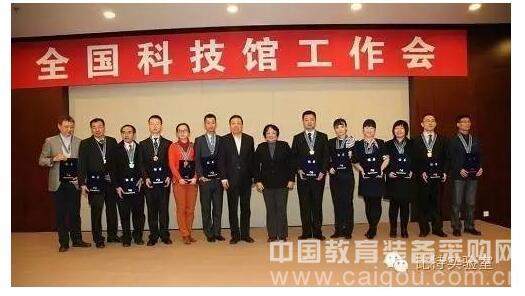
Dr. Cao Weixun, founder of Bit Lab, accepted the award at the Beijing International Convention Center on December 17, 2015.

Long press the picture to identify the QR code, one click attention
We have a huge selection of cabinets, including kitchen furniture and coat rack , so you can create your ideal layout.
Kitchen Cabinet offers the perfect spot to place your microwave, while providing amble storage space underneath for a variety of items. Casters on the bottom make it easy to move the cabinet throughout the kitchen. Simply place it where you need it when you're making meals, and then push it out of the way when it's not in use.
Crafted with an attractive white finish, the cabinet can serve as a small kitchen island, too. An open storage compartment offers room for kitchen essentials, bowls, spices and more. Behind the cabinet doors, you have even more space for concealing pots and pans, dinnerware or other items.
Cupboard,Cupboard Pantry,Western Cupboard,Student Cupboard
Baklam , https://www.jmbaklam.com